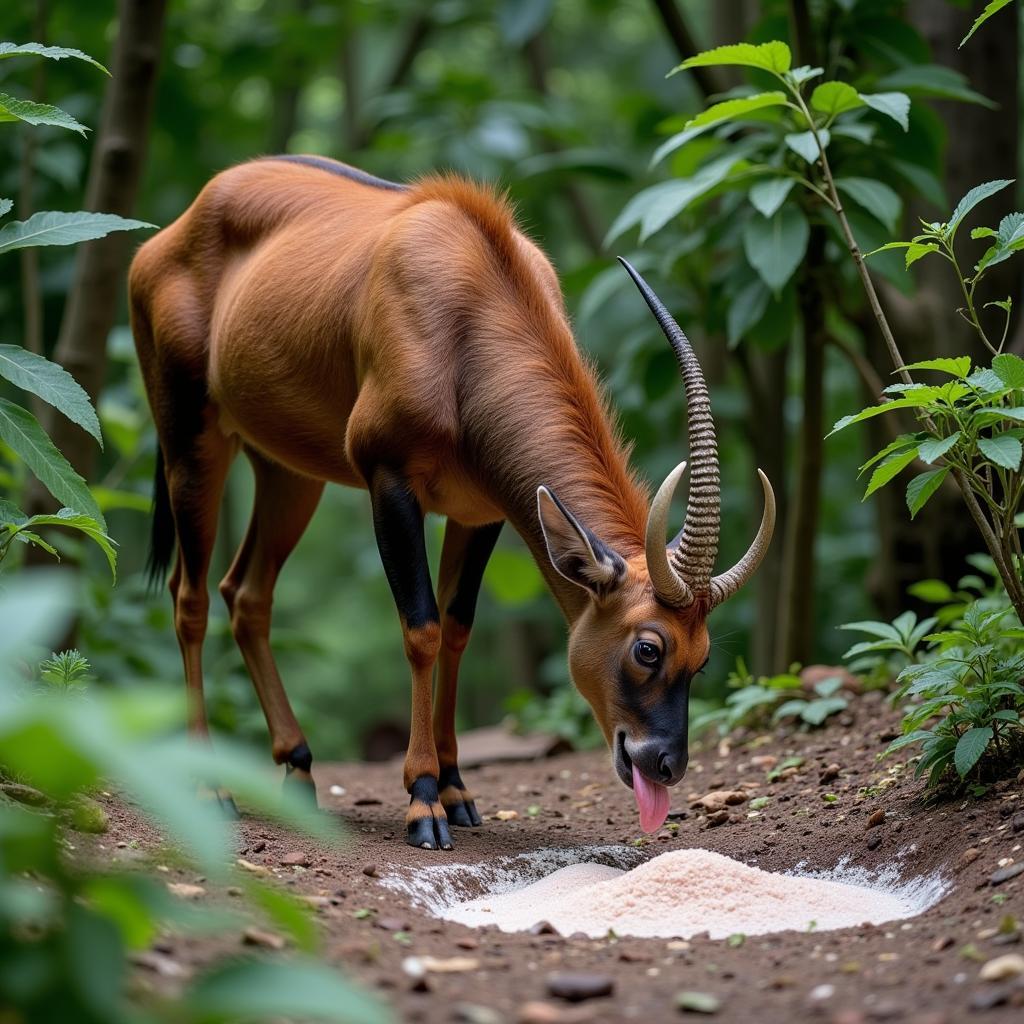The Elusive Majesty: Unveiling the African Bongo Antelope
The African bongo antelope, a creature of striking beauty and elusiveness, graces the dense rainforests of Central Africa. These majestic animals, with their auburn coats striped with brilliant white, are a true testament to the biodiversity found within the continent.
A Glimpse into the Bongo’s World
Bongos are the largest of the forest antelope species, with males reaching up to 450 pounds. Both males and females sport impressive horns that spiral upwards, giving them a truly regal appearance. Their reddish-brown coats, marked with 10-15 vertical white stripes, provide excellent camouflage in the dappled sunlight of their forest home.
Navigating the Forest Depths
The dense rainforests of countries like Cameroon, the Democratic Republic of Congo, and South Sudan provide a haven for these shy herbivores. Bongos are crepuscular, meaning they are most active during dawn and dusk, foraging for leaves, fruits, and bark. They have a particular fondness for salt licks, which provide essential minerals.
 African bongo at a salt lick
African bongo at a salt lick
Threats to a Forest Icon
Sadly, these magnificent creatures face increasing threats. Habitat loss due to deforestation and human encroachment is a significant concern. Hunting for their meat and horns also poses a severe risk to their populations.
 African bongo mother and calf
African bongo mother and calf
Conservation Efforts for the Future
Recognizing the urgent need for action, organizations are implementing conservation strategies to protect the African bongo. Anti-poaching patrols, habitat restoration, and community education programs all play a vital role in securing a future for these magnificent antelopes.
Frequently Asked Questions about the African Bongo
1. What is the lifespan of an African bongo in the wild?
In their natural habitat, African bongos can live for 10-15 years.
2. Are African bongos social animals?
Bongos are typically found in small herds of up to 30 individuals, led by a dominant female.
3. What is the conservation status of the African bongo?
The International Union for Conservation of Nature (IUCN) classifies the African bongo as “Near Threatened.”
4. Do African bongos have any natural predators?
Leopards, lions, and hyenas pose threats to bongos, especially the young and vulnerable.
5. How do African bongos communicate with each other?
Bongos use a variety of vocalizations, including grunts, snorts, and bleats, to communicate within their herds.
Want to learn more about the fascinating world of African horned animals? Check out our comprehensive guide on African antelope identification!
Seeking Further Insights?
For those eager to delve deeper into the diverse fauna of Africa, explore our articles on African animal tracks and the array of animals that call the African jungle home. We also have a compelling piece on the historical and contemporary aspects of the African bongo hunt.
Need Assistance?
Contact us at:
Phone Number: +255768904061
Email: kaka.mag@gmail.com
Address: Mbarali DC Mawindi, Kangaga, Tanzania
Our dedicated customer support team is available 24/7 to assist you!


